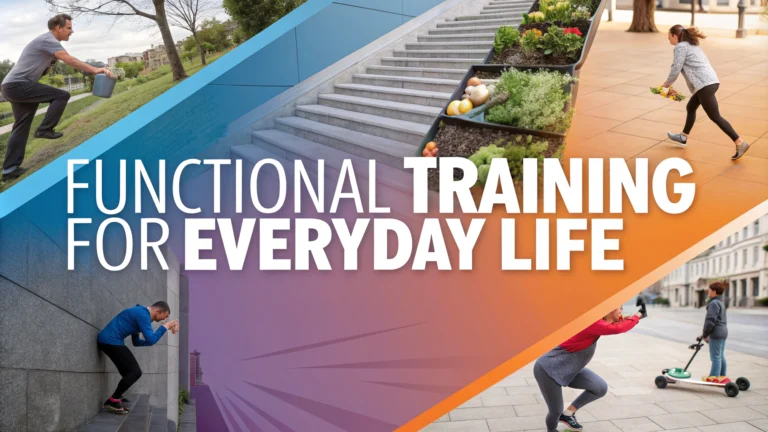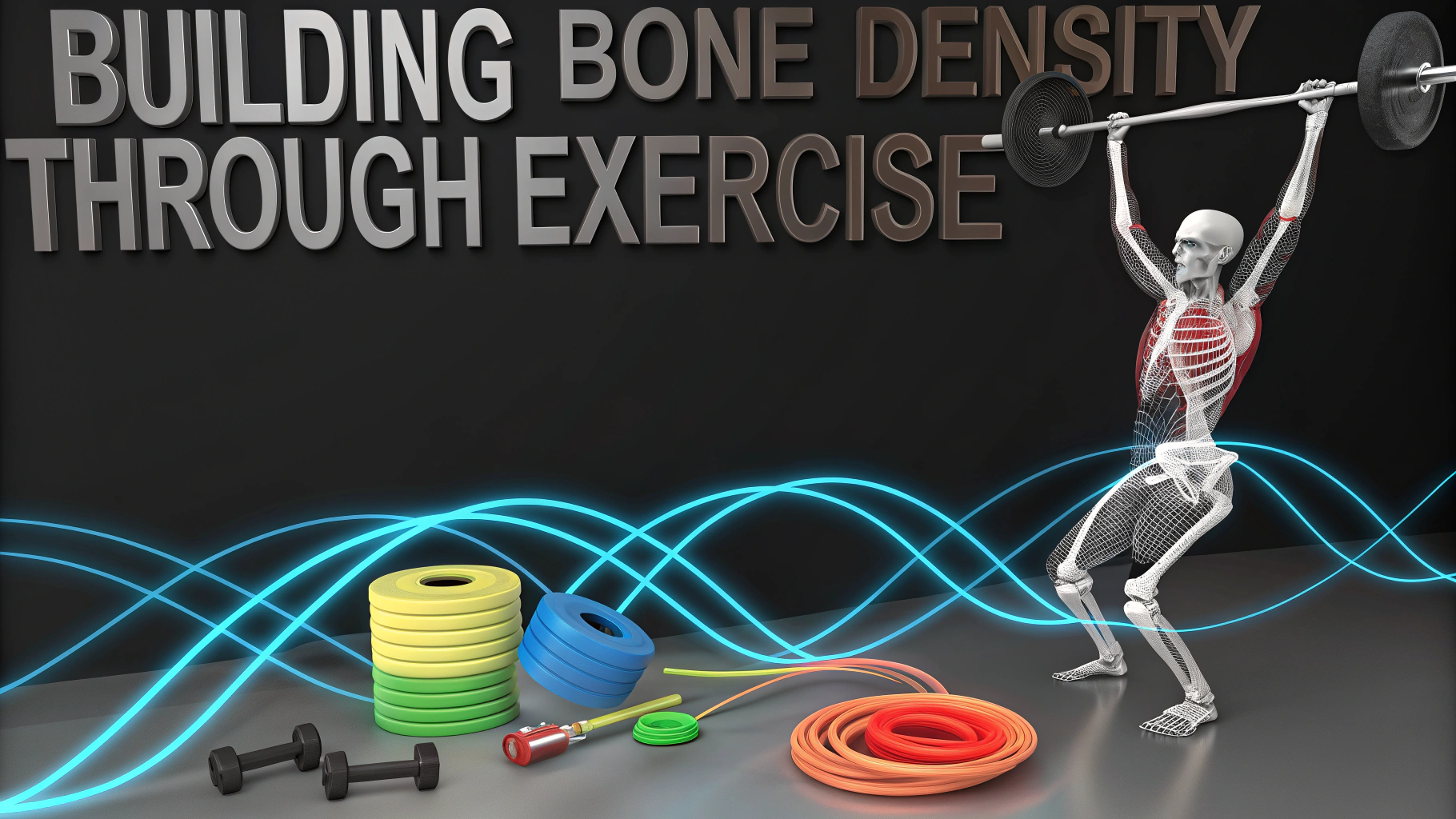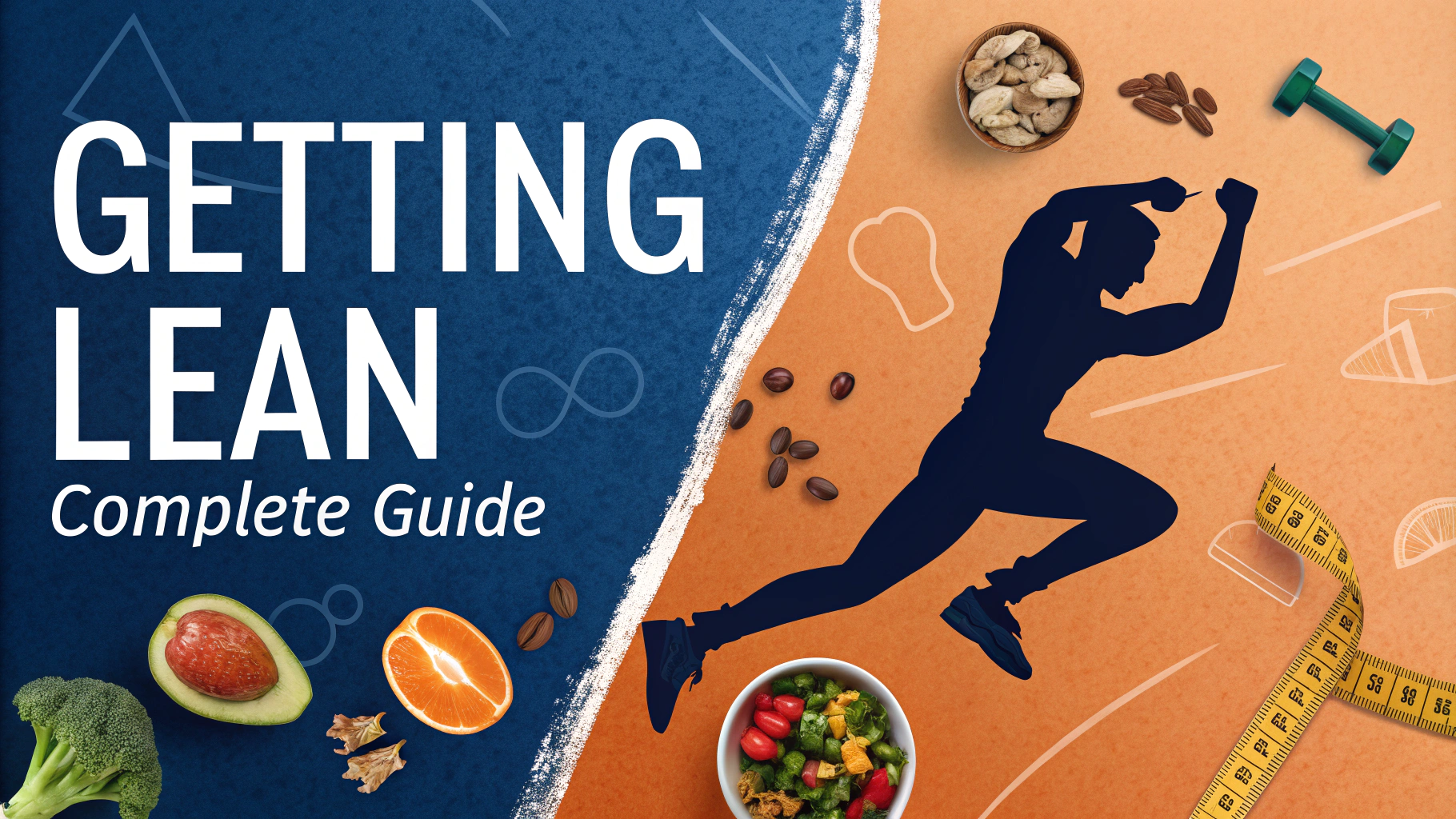Functional training adapts gym exercises to match real-world movements you do every day.
This guide shows you how to train specifically for life’s physical demands – from carrying groceries to playing with kids.
What Makes Training “Functional”?
Functional exercises work multiple muscle groups and joints simultaneously, just like natural human movements.
Key Components of Functional Training:
- Multi-joint movements
- Core stability focus
- Balance training
- Natural movement patterns
- Real-world strength application
Essential Functional Exercises
For Better Lifting and Carrying:
- Farmer’s walks: Walk 30-50 feet while carrying dumbbells at your sides
- Deadlifts: Practice proper form with light weights first
- Suitcase carries: Single-side loaded walks for balance
For Climbing Stairs and Standing Up:
- Step-ups on a sturdy platform
- Bodyweight squats
- Split squats for single-leg strength
Sample Weekly Training Plan
| Day | Focus | Key Exercises |
|---|---|---|
| Monday | Lower Body | Squats, lunges, step-ups |
| Wednesday | Upper Body | Push-ups, rows, carries |
| Friday | Full Body | Deadlifts, planks, rotations |
Equipment Needed
Start with these basic items:
- Resistance bands ($10-20)
- Two sets of dumbbells (light and medium) ($40-80)
- Stability ball ($20-30)
- Exercise mat ($15-25)
Safety Tips
- Start with bodyweight exercises to master form
- Progress gradually with weight and complexity
- Keep your core engaged during all movements
- Stop if you experience pain (not to be confused with normal muscle fatigue)
Additional Resources
Connect with certified functional training experts through these organizations:
- National Academy of Sports Medicine (NASM): www.nasm.org
- American Council on Exercise (ACE): www.acefitness.org
Track your progress using free apps like Nike Training Club or Strava to maintain motivation and consistency.
Tips for Success
Building Consistency:
- Schedule workouts like important meetings
- Start with 2-3 sessions per week
- Find a training partner for accountability
- Log your progress in a fitness journal
Progression Guidelines:
- Master form before adding weight
- Increase weight by 5-10% when exercises feel easy
- Add complexity gradually (e.g., unstable surfaces)
- Include rest days between training sessions
Common Mistakes to Avoid
- Skipping warm-ups
- Using too much weight too soon
- Neglecting proper breathing techniques
- Focusing on quantity over quality
- Ignoring recovery time
Recovery and Maintenance
- Get 7-9 hours of sleep nightly
- Stay hydrated throughout the day
- Stretch major muscle groups daily
- Use foam rolling for muscle recovery
Conclusion
Functional training offers a practical approach to fitness that directly improves daily activities and overall quality of life. Start slowly, focus on proper form, and progressively challenge yourself as you build strength and confidence. Remember that consistency trumps intensity, and proper recovery is essential for long-term success.
Regular functional training will lead to better mobility, reduced risk of injury, and increased independence in daily activities. Whether your goal is to keep up with your children or maintain an active lifestyle as you age, functional training provides the foundation for lifelong physical capability.
FAQs
- What exactly is functional training and how does it differ from regular gym workouts?
Functional training involves exercises that mimic everyday movements and activities, using multiple muscle groups simultaneously. Unlike isolated machine exercises, functional training emphasizes natural movement patterns like pushing, pulling, squatting, and rotating that directly translate to daily tasks. - How many times per week should I do functional training to see results?
For optimal results, perform functional training 3-4 times per week with at least one day of rest between sessions. Beginners should start with 2-3 sessions per week to allow proper adaptation and recovery. - Do I need special equipment for functional training?
Basic functional training can be done with minimal equipment like resistance bands, kettlebells, dumbbells, and your body weight. More advanced training might incorporate suspension trainers (TRX), medicine balls, and stability balls. - Can functional training help with weight loss?
Yes, functional training can be effective for weight loss as it engages multiple muscle groups simultaneously, increasing caloric burn. When combined with proper nutrition, it can create the caloric deficit needed for weight loss while improving strength and mobility. - Is functional training suitable for seniors or people with limited mobility?
Yes, functional training can be modified for all fitness levels and ages. It’s particularly beneficial for seniors as it improves balance, coordination, and strength for daily activities. Exercises can be adapted to accommodate physical limitations. - How should I structure my functional training workout?
Begin with a dynamic warm-up (5-10 minutes), followed by compound movements (20-30 minutes), and end with mobility work or cool-down (5-10 minutes). Include a mix of pushing, pulling, rotating, and locomotion exercises. - What role does nutrition play in functional training?
Nutrition supports functional training by providing energy for workouts and recovery. Consume adequate protein (0.8-1.2g per kg of body weight), complex carbohydrates, and healthy fats. Stay hydrated before, during, and after training. - How long before I see results from functional training?
Most people notice improvements in strength, balance, and daily activities within 4-6 weeks of consistent training. Physical changes typically become visible after 8-12 weeks, depending on diet, consistency, and training intensity. - Can functional training replace traditional cardio exercises?
Functional training can include cardiovascular elements through circuit training and compound movements. While it can supplement cardio, including specific cardiovascular training is beneficial for overall fitness and endurance. - What are the most common mistakes in functional training?
Common mistakes include poor form, rushing through movements, using too much weight too soon, skipping warm-ups, and not progressing gradually. It’s important to focus on proper technique and control throughout each movement.








